Terminal 3300 Remote Controller

The Terminal 3300 could be seen as a transitional model as though it kept the Beosystem remote design, it did in fact use the Beolink 1000 codes and a Beosystem 3300 can be operated using a Beolink 1000.

The Terminal 3300 could be seen as a transitional model as though it kept the Beosystem remote design, it did in fact use the Beolink 1000 codes and a Beosystem 3300 can be operated using a Beolink 1000.
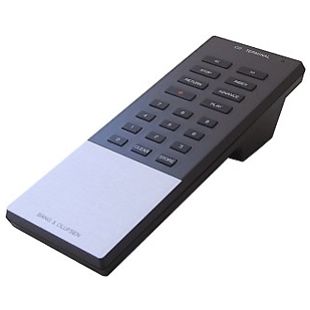
Rarely seen remote that was an optional accessory for the BeoGram CD50. This required an optional board to be fitted so finding the remote is only the easy part!
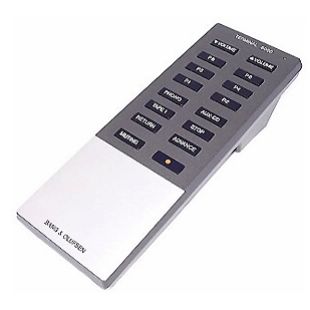
A small remote for use with the Beosystem 5000, this followed the same design as the earlier one way system remotes and was one way, controlling basic functions. Actually very useful as the MCP 5000 was too heavy to casually carry around!
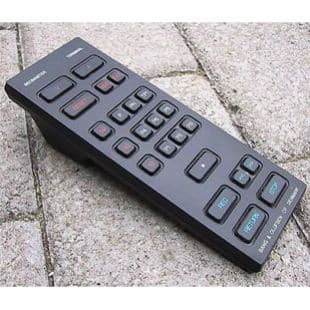
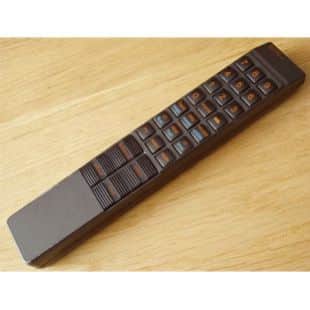
Your key to operational comfort
Around half of Bang & Olufsen’s colour TVs in the late 1970’s and early 1980’s were supplied complete with an advanced remote control handset – the Beovision Video Terminal. It was called a Video Terminal because it did so much more than just switch on the set or change programmes for you.
For normal entertainment viewing you simply touched the required programme number. Volume level, colour strength and picture brilliance could be adjusted up and down as desired – or returned instantly to a pre-determined norm by pressing RESET. You could even mute the sound instantly (perhaps if the phone rang) or check through the programmes showing on all the other channels – all at the touch of a single button.
The same terminal also controlled Teletext viewing on sets fitted wit the optional Teletext circuitry. And for those who chose to include Bang & Olufsen video cassette recorder (like Beocord Video 8800) as part of their domestic entertainment system, the controls for operating all the primary VCR functions were also right there in your hand. The Terminal let you make recordings, play the tape or wind it to any position without having to move from your comfortable armchair.
The Beovision Video Terminal was supplied with, for example, Beovisions 5100, 7100 and 8100. The Terminals for other models in the B&O range included all these keys and functions plus three more. Of course, it was still possible to operate a Beovision even if the remote Terminal was temporarily mislaid or out of action. The set’s direct controls were mounted in a hinged compartment behind the loudspeaker grille. The panel pivoted outward at a touch and in addition to the direct function controlled governing picture and sound adjustments and programme scanning, it contained the buttons for pre-tuning the buttons. Your dealer could use these to tune the set as part of the installation service. Thereafter you would probably never need to touch them again.
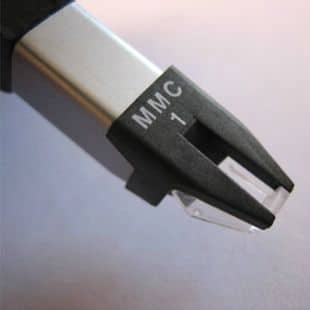
The MMC1 was the top of the range of B&O’s new cartridge range.
It was only available as an upgrade – even the top of the range Beogram 8002 was only fitted with the MMC2. The MMC1 had a line contact diamond mounted on a tubular sapphire cantilever.
The tubular construction offered less weight than a solid cantilever but with immense stiffness. The diamond profile was similar to that of the MMC20CL being line contact. The way to look at these cartridges was to imagine an elliptical profile but with both the front and rear facets being scooped out. In this way the vertical contact surface was maximised and the horizontal element kept to a minimum.
The MMC1 and MMC2 were essentially the same cartridge with the MMC1 using the best specified diamond tips. The MMC system was carried over from the SP series but taken to an even smaller level.
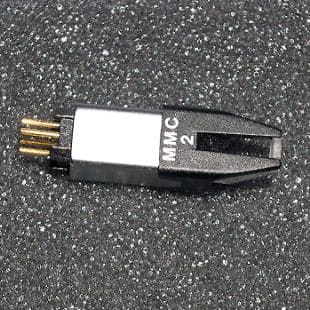
The MMC2 was the replacement in the B&O line up for the very successful MMC20CL.
Like the MMC1, it boasted a sapphire tubular cantilever and line contact diamond. It was fitted as standard to the top of the range Beograms such as the 8002 and the 7000.
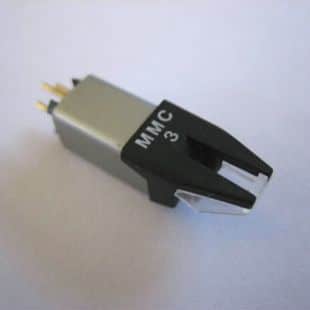
This cartridge was in many ways the replacement for the MMC20EN as it had a tapered cantilever and naked elliptical stylus.
It was fitted as standard to the Beogram 6002.
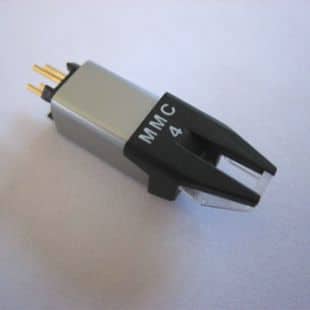
This could be regarded as the standard cartridge in the range and was fitted to many decks as standard.
In many ways a replacement for the MMC20E, it offered good performance at a most reasonable price
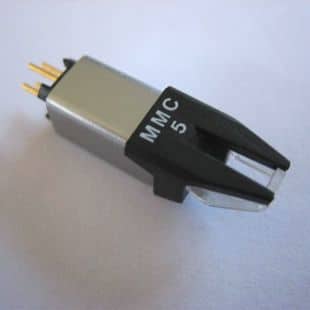
The most basic of the range, this cartridge was available to be specified for those decks not fitted with a cartridge as standard such as the Beogram RX.
It could be differentiated by its cantilever which was a straight non tapered aluminium tube.